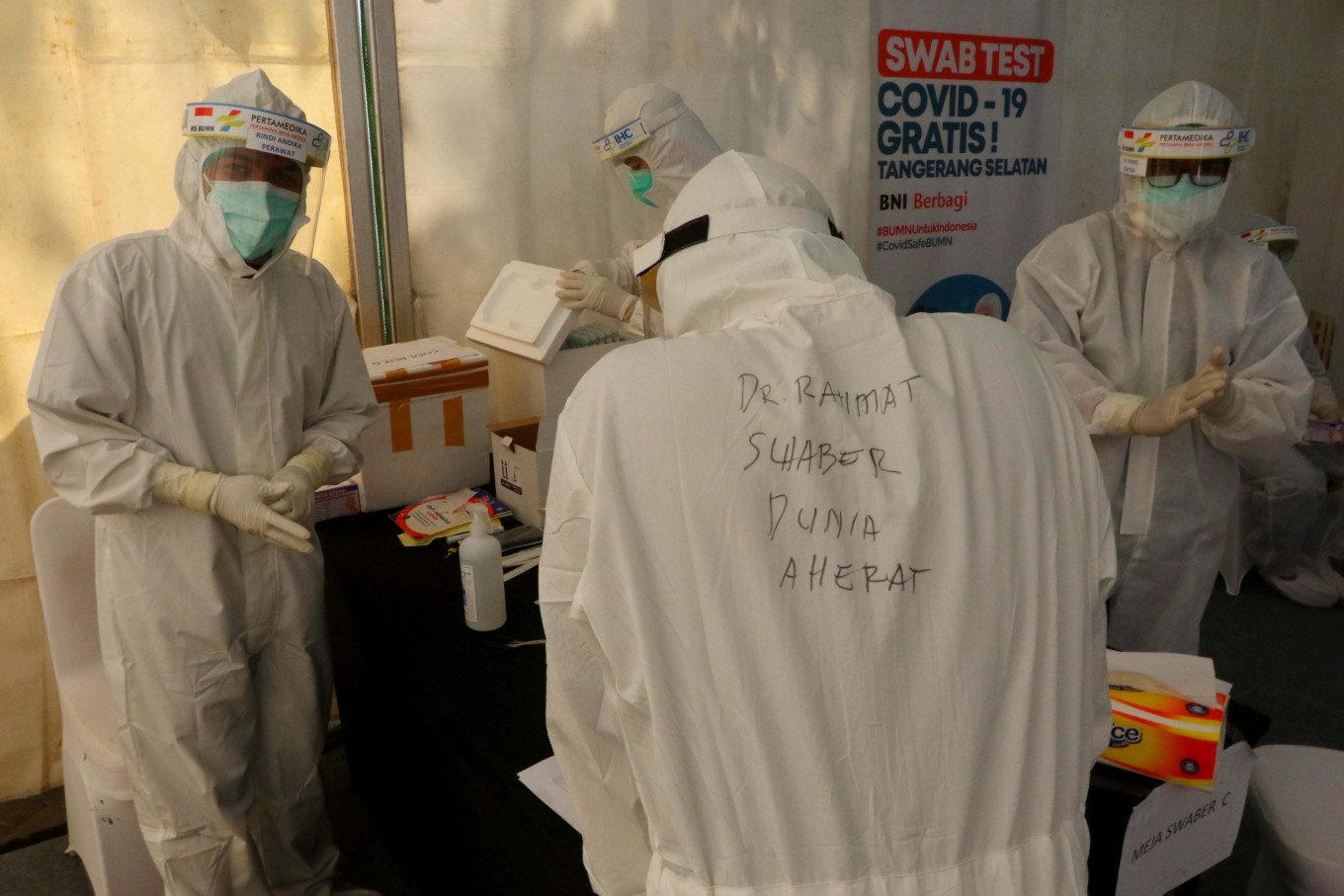Popular Reads
Top Results
Can't find what you're looking for?
View all search resultsPopular Reads
Top Results
Can't find what you're looking for?
View all search resultsPCR tests remain gold standard, but factors affect results
Reports of inaccurate government swab tests have alarmed the public.
Change text size
Gift Premium Articles
to Anyone
W
hile recent reports have called the reliability of polymerase chain reaction (PCR) tests into question, experts agree that they remain the best tests for COVID-19 but acknowledge that various factors affect results.
Recently, the State Intelligence Agency (BIN), whose significant involvement in the country's pandemic response has raised questions and criticism from civil society organizations, rejected a report by Tempo magazine that its PCR tests were inaccurate.
The BIN, which has received Rp 5.57 trillion of the COVID-19 response budget, said false positives and negatives were found in other countries as well and that several factors affected test results among different labs.
"There are some factors that can affect differences in swab test [results]. They include the machine’s condition, the time of the test, the patient’s condition and testing kit quality," the agency's spokesperson Wawan Hari Purwanto said in a statement.
Experts told The Jakarta Post it would only be fair to compare test results if samples were taken at the same time and were sent to different labs that had the same PCR settings.
Indonesia operates some 263 labs for COVID-19 testing, and they have a variety of machines and testing kits. But even before samples reach labs, certain variations can affect results, including when and how samples are taken, transported and stored.
"PCR tests show the best results within the first three days of the onset of symptoms – if patients show any symptoms at all – because that's when the viral load is believed to be at the highest level," said Maria Lucia Inge Lusida, a professor of clinical microbiology at Airlangga University (Unair).
"The longer the period between symptom onset and the administration of the test, the lesser the viral load becomes and the higher the chances are for negative results," added Inge, who leads the university's Institute of Tropical Diseases.
The PCR testing process also requires well-trained personnel, and the scarcity of such medical professionals has been cited as a reason for Indonesia's low testing rate.
Aryati, a clinical pathology professor from Unair who chairs the Indonesian Association of Clinical Pathology and Laboratory Medicine Specialists (PDS PatKLIn), said the testing work required great attention to detail, from taking the samples properly to pipetting materials and processing the tests.
"Without caution, there could be contamination," she said.
The machine settings and the reagents used can also affect test results. Different machines target different sets of genes that belong to SARS-CoV-2, the virus that causes COVID-19, and some genes degrade more quickly than others, causing variations in detectability over time, Aryati said. She added that some genes were found in other strains of the virus as well.
The BIN and experts have highlighted the cycle threshold, or CT value. PCR tests amplify samples’ genetic matter in cycles to bring indicators of the virus to a detectable threshold. A lower CT value means fewer cycles were required to identify the virus, suggesting a higher viral load.
PCR machines in Indonesia set varying limits on the cycles, ranging between 31 and 45, but many in the country are set at a cutoff of 40 cycles, according to experts.
If the virus is not identified within the specified number of cycles, the test result is negative. If the virus is found within the cycle limit, the result is positive.
"The BIN has set the limit higher than other institutions, as seen through the CT value of its real-time PCR. The lower threshold is 35, but to avoid misdetection of asymptomatic cases, the BIN has increased the limit to 40," Wawan of the BIN said.
Aryati, however, said results from different PCR settings, including CT cutoffs, could not be compared so easily. She said that if the CT value was set at 31 in a device with a maximum of 31.5, then if the same sample were tested using a device with a maximum of 40 or 45, the CT value should be around 39 or 44 respectively, a similar proximity to the maximum threshold.
A low CT value, which could indicate a high viral load, is associated with a person being more infectious and vice versa. Some studies of viral cultures have found that CT values higher than 34 or 35 were much less likely to be cultured, meaning they were no longer likely to be infectious.
Noting that the complexity of PCR tests could affect public trust in test results, experts have urged people to leave the interpretation to medical professionals and have emphasized that PCR tests remain the gold standard in detecting the virus despite the possibilities of false negatives and positives.
Inge said that while they were not perfect, PCR tests were the best means of detecting the virus for now.
"There needs to be routine quality control of labs [...] There are many new labs, and without such control, we won't know their performance," she said.
The head of the Health Ministry's research and development body, Slamet, did not immediately respond to the Post's request for comment.










